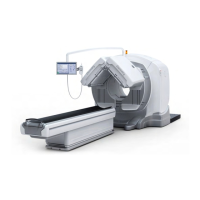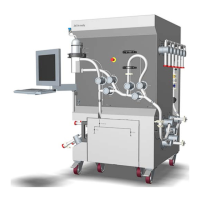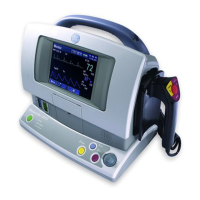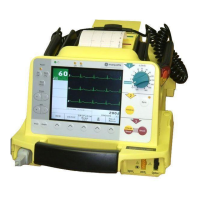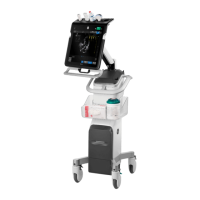variation. A low and stable heart rate will allow the shortest scan duration, which will minimize
patient dose.
Cardiac Axial imaging features include:
•
Scan speed of 0.28 or 0.35 seconds
•
Compatible with Hi Res mode
All kV and mA stations available, dependent on generator and tube limitations
•
Compatible with SmartmA (See Automatic Exposure Control)
•
Image thickness of 0.625 mm or 2.5 mm
•
Reconstruction algorithms optimized to cardiac imaging
5.7 ECG-Modulated mA
5.7.1 Electrocardiograph Tube Current Modulation
Modulating tube current (mA) based on an electrocardiograph (ECG) signal is a technical
innovation that significantly reduces radiation dose for cardiovascular imaging applications.The
concept is based on the fundamental principles of cardiac CT imaging.
5.7.2 ECG-Modulated mA Theory
The motion of the heart has always been challenging for diagnostic imaging of the heart and
surrounding areas. Motion can cause blurring and mis-registration artifacts in images. Heart
motion increases with a patient’s heart rate and for some heart rates there may not be one
single optimal phase of the heart cycle which minimizes motion for all coronary arteries. For this
reason, the CT system allows the user to set up a cardiac acquisition window with up to 3
independent parts for imaging different periods of the heart cycle. The user may specify phases
of the heart cycle to acquire and the relative tube current level for each part of the acquisition
window. The system responds to the patient’s heart rate and modulates the tube current to
acquire the cardiac phases requested by the user. This tube current modulation, in conjunction
with prospective ECG gating of the X-ray exposure, allows the system to acquire the requested
cardiac phases while minimizing dose to the patient. If Auto Gating is enabled, the system will
automatically adjust the scan parameters based on the patient’s heart rate and heart rate
variability during scan prescription. This allows the system to intelligently respond to heart rate
changes and optimize the scan parameters prior to acquisition.
The tube current utilized for cardiac acquisition window part 1 (100% mA) may be set by the
user manually or automatically by the system (see Auto mA) based on the user specified Noise
Index (NI).
In addition to the user-specified ECG-based mA modulation, the system will also modulate the
tube current during each cardiac acquisition phase to minimize patient dose. Although projection
data is acquired for a duration of at least one complete rotation, the temporal resolution is, on
average, half of the gantry rotation time (e.g. 140 ms when the gantry rotation time is 280 ms).
The additional projection data beyond 140 ms is used for the outer few slices, and for image
quality improvements throughout the volume. The system typically modulates the tube current
(mA) to 20% for the outer views, so that the additional image information can be provided with
minimal increase in patient dose.
Revolution CT User Manual
Direction 5480385-1EN, Revision 1
650 5 System Operational Modes
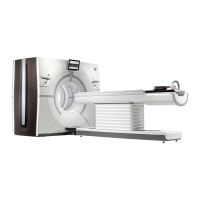
